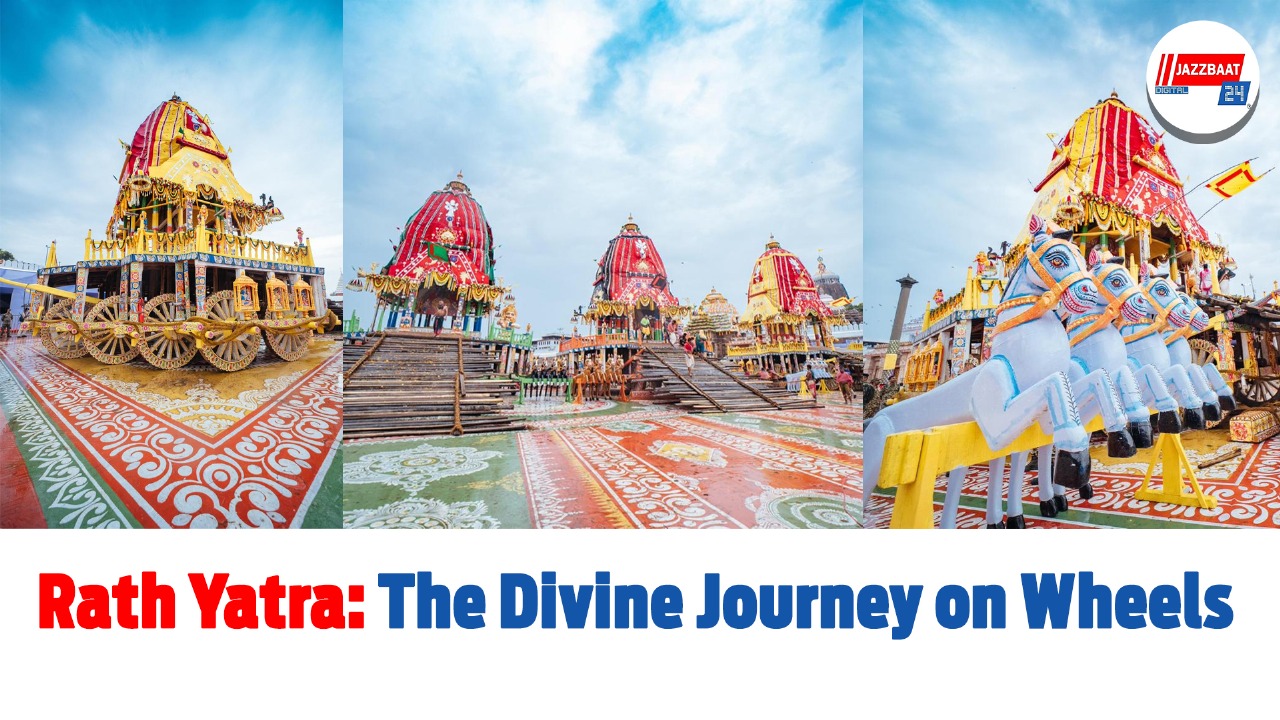
By Sulagna Halder
June 27, 2025:
Every year, the coastal city of Puri in Odisha welcomes an event of extraordinary grandeur and spiritual intensity known as Jath Yatra or Rath Yatra. This revered festival marks the annual procession of Lord Jagannath, an incarnation of Vishnu, accompanied by his brother Balabhadra and sister Subhadra. Their journey from the inner sanctum of the Jagannath Temple to the Gundicha Temple, approximately three kilometres away along the grand Bada Danda, draws around four to five hundred thousand pilgrims from India and across the world. This year the festival begins on 27 June 2025, the Dwitiya Tithi of Ashadha, and continues over nine days, culminating in the deities’ return to the main temple on Niladri Bijay.
Preparations for the festival begin months in advance. On 30 April, the sacred occasion of Akshaya Tritiya, the first logs of wood, usually neem and other specified species like phassi and dhausa are gathered to build three colossal wooden chariots. These chariots are constructed by hereditary craftsmen, who work without formal blueprints or modern machinery but follow ancestral measurement systems over a period of nearly two months, completing more than four thousand wood pieces including over one thousand logs for structural support. The chariot of Lord Jagannath, called Nandighosha, stands at about 44 feet 2 inches tall, with 16 wheels and is wrapped in red and yellow fabrics. Balabhadra’s Taladhwaja chariot has 14 wheels, is around 43 feet 3 inches tall and is draped in red and bluish green, while Subhadra’s Darpadalana stands at 42 feet 3 inches with 12 wheels, in black and red. No metal nails are used; instead, wooden joints and dowels hold the structures together, reflecting a deep respect for tradition.
Before the main festival, the deities are ceremonially bathed on Snana Purnima on 11 or 12 June, using 108 pots of sacred water. Following this ritual, they are believed to fall ill and go into a fifteen day period of seclusion, called Anavasara, during which they receive herbal treatments and devotees are not permitted to view them. In the lead up to the Yatra, on 26 June, the Gundicha Temple is thoroughly cleansed in a ritual known as Gundicha Marjana. On the day of the procession the deities are carried from the temple in a rhythmic ceremony called Pahandi, then seated on the chariots, and devotees pull the sacred ropes while chanting “Jai Jagannath”.
A distinct feature of the festival is Chhera Pahanra, when the Gajapati King of Puri, dressed as a humble sweeper, personally cleanses the chariot platforms with a golden broom and sprays sandalwood paste on the path. This act symbolises humility and the principle that before God, everyone is equal. The festival represents divine accessibility, as the deities leave the temple so that all can have darshan, embodying a message of universal brotherhood and purification.
During their seven day stay at the Gundicha Temple, devotees perform rituals such as Hera Panchami, when Goddess Lakshmi symbolically visits the Gundicha Temple in search of Lord Jagannath. The return procession, Bahuda Yatra, begins on 5 or 4 July, during which the deities pause at the Mausima Temple, literally their aunt’s home and are offered poda pitha, a traditional pancake. Following Bahuda, the deities are adorned in gold jewellery weighing an estimated 200 kilograms on Suna Besha, and a sweet drink called Adhara Pana is offered on the chariots, with broken pots signifying divine grace for all. The final day is Niladri Bijay, when the trio returns to their temple sanctum, concluding the festival on 8 July.
Jath Yatra is more than spectacle. It is a living testament of faith, unity and enduring tradition. Millions believe that participating in pulling the chariots cleanses sins and brings blessings. The festival transcends social divisions, drawing people of diverse backgrounds, including non Hindus, into a shared spiritual experience. Despite modern crowd control measures and mobile apps to aid navigation, the festival remains rooted in age old devotion and community participation. As each chariot wheels forward, it carries with it hopes, prayers and a timeless reminder of devotion’s power to unite humankind and uplift the spirit.